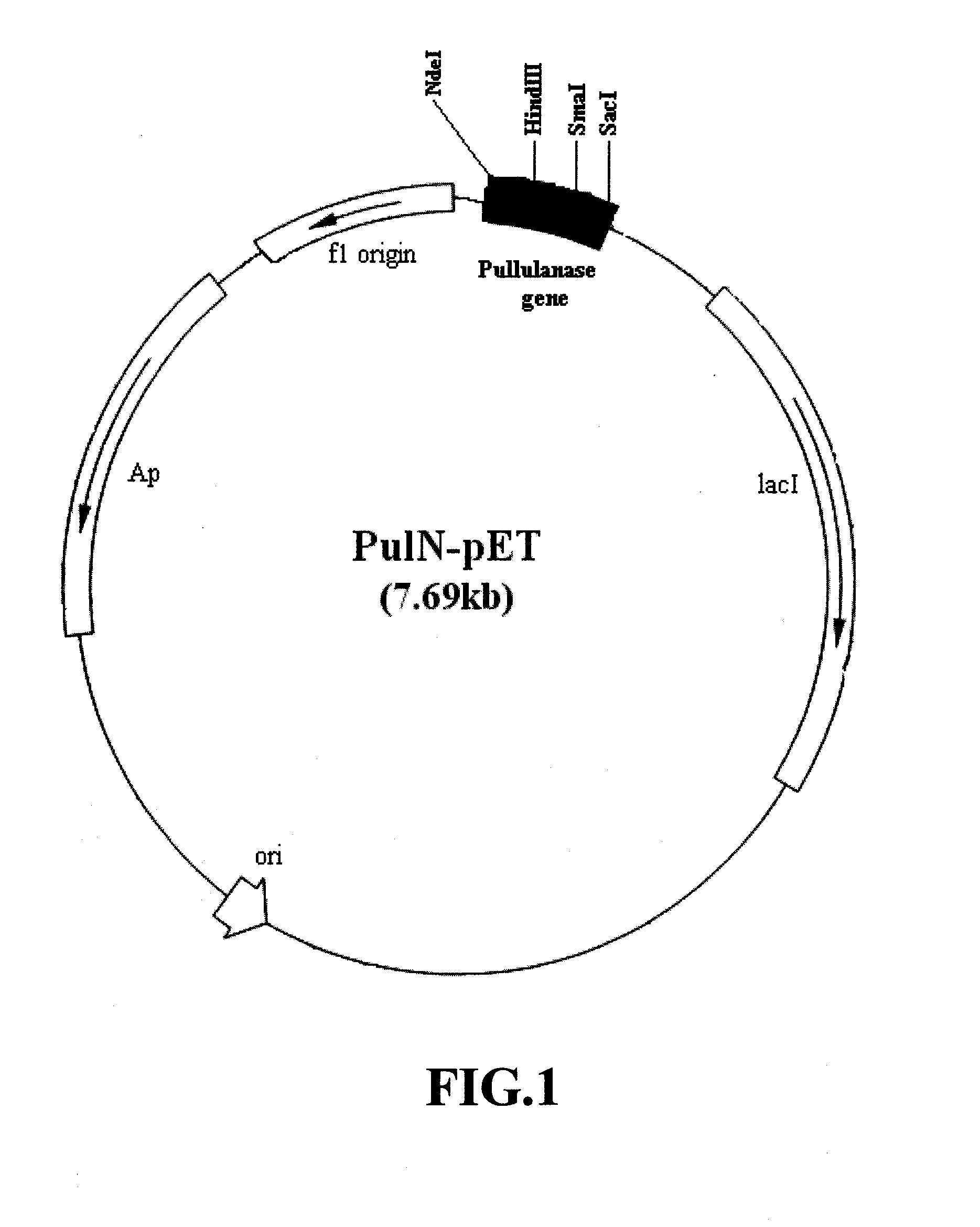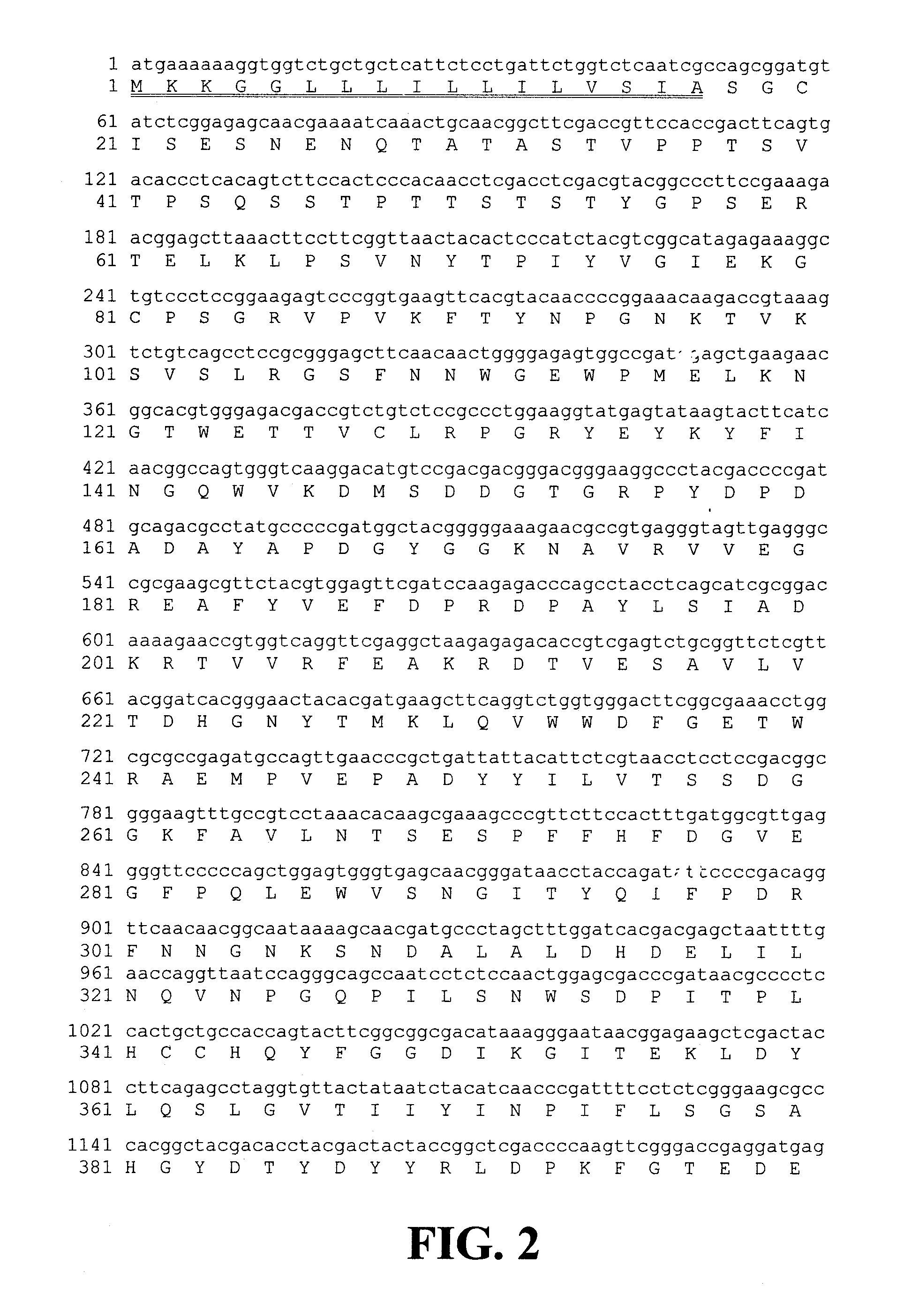Single step liquefaction and saccharification of corn starch using an acidophilic, calcium independent and hyperthermophilic pullulanase
- Summary
- Abstract
- Description
- Claims
- Application Information
AI Technical Summary
Benefits of technology
Problems solved by technology
Method used
Image
Examples
Embodiment Construction
[0036]The hyperthermophilic archaeal strain KOD1, isolated form Kodakara Island, Kagoshima, Japan, was cultured at 85° C. and cells were obtained. Chromosomal DNA of strain KOD1 was prepared by the method of Ramakrishnan and Adams (Ramakrishnan and Adams, 1995). A 2298 by open reading frame (ORF) coding for a pullulanase type II of GH13 family was identified in the genome of T. kodakaraensis KOD1. A set of primers (5′-CATATGAGCGGATGTATCTCGGAGAGCAACG-3′ (SEQ ID NO 3, corresponding to 5′ end of gene) and 5′-GAAGCGGGGGTCAACCCCGCTCAAG-3′ (SEQ ID NO 4, corresponding to 3′ end of the gene) was synthesized. Restriction site of enzyme NdeI (CATATG) was introduced in the forward primer. The gene was amplified by polymerase chain reaction (PCR) using this pair of primers and genomic DNA of T. kodakaraensis KOD1 as template. PCR mixture (50 μL) composed of T. kodakaraensis KOD1 genomic DNA (100 ng), 1× PCR buffer (0.01% Tween 20, 20 mM (NH4)2SO4, 75 mM Tris-Cl pH 8.8 at 2...
PUM
| Property | Measurement | Unit |
|---|---|---|
| Temperature | aaaaa | aaaaa |
| Temperature | aaaaa | aaaaa |
| Temperature | aaaaa | aaaaa |
Abstract
Description
Claims
Application Information
 Login to View More
Login to View More - R&D
- Intellectual Property
- Life Sciences
- Materials
- Tech Scout
- Unparalleled Data Quality
- Higher Quality Content
- 60% Fewer Hallucinations
Browse by: Latest US Patents, China's latest patents, Technical Efficacy Thesaurus, Application Domain, Technology Topic, Popular Technical Reports.
© 2025 PatSnap. All rights reserved.Legal|Privacy policy|Modern Slavery Act Transparency Statement|Sitemap|About US| Contact US: help@patsnap.com



